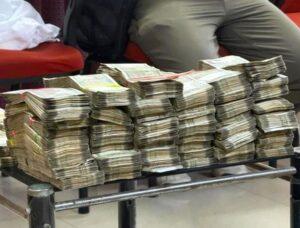Prime Minister Narendra Modi today inaugurated the Sardar Sarovar Dam in Gujarat.
When the ambitious project’s foundation stone was laid, Modi was an 11-year-old boy. On the day of its inauguration, PM Modi is celebrating his 67th birthday, which is enough to explain the massive delay and hurdles the controversial project went through in all these years.
“A massive misinformation campaign was launched against the dam project, which is an engineering miracle,” PM Modi said during the inauguration.
From the land of Bapu and Sardar Patel, the Sardar Sarovar Dam is dedicated to the nation today. This will benefit crores of citizens. pic.twitter.com/gZKYbkMFPh
— Narendra Modi (@narendramodi) September 17, 2017
It is second biggest dam in the world after the Grand Coulee Dam in the United States. It is also the third highest concrete dam in India.
Here is a timeline of the project:
The Sardar Sarovar project was envisioned by Sardar Vallabhbhai Patel, the first deputy prime minister of India, before independence. The foundation stone was laid on April 5, 1961, by then prime minister Pandit Jawaharlal Nehru after a study on the river was carried out.
The 1,312-kilometre-long river drains into the Arabian Sea after passing through Madhya Pradesh, Maharashtra and Gujarat. The dam is supposed to provide drinking water, power and irrigation to a wider region including Rajasthan.
Today, on Vishwakarma Jayanti we dedicate to the nation the Sardar Sarovar Dam: PM @narendramodi at the public meeting in Dabhoi pic.twitter.com/UOmKDj4MNr
— PMO India (@PMOIndia) September 17, 2017
A Narmada Water Dispute Tribunal was created in 1969 to decide the fate of the project after negotiations between states bore no fruit. Finally, the NWDT announced its verdict in 1979. It was decided that out of 35 billion cubic metres of water available for consumption from the dam, Madhya Pradesh would get 65%, Gujarat 32% and Rajasthan and Maharashtra remaining 3%.
The Planning Commission finally approved the project in 1988.
The project then got delayed as it ran into problems with activists for not meeting the required conditions as per the Ministry of Environment and Forests. At the forefront was activist Medha Patkar who first visited the site of the dam in 1985.
Medha Patkar’s Jal Satyagraha for Narmada families enters third day https://t.co/uZN93rId6s pic.twitter.com/wJNh8X8wKe
— Hindustan Times (@htTweets) September 17, 2017
With an aim to completely stop the project, Patkar organised several mass protests and formed “Narmada Bachao Andolan” arguing that the project will displace more than 200,000 people apart from damaging the fragile ecology of the region. After her efforts, on March 31, 1993, the World Bank withdrew from the project and cancelled the loan. She also took the government to the Supreme Court over rehabilitation issues and obtained a stay in 1996.
In 2000, the Supreme Court allowed work on the dam to continue, but with conditions. The court said its verdict, “The project has the potential to feed as many as 20 million people, provide domestic and industrial water for about 30 million, employ about 1 million, and provide valuable peak electric power in an area with high unmet power demand.” The court said the height of the dam could be raised to 90 metres and no higher (the height today is 138.68 metres, which will allow maximum ‘usable storage’ of 4.73 million acre feet of water).
Finally, the dam was commissioned in 2006 when Narendra Modi was the Chief Minister of Gujarat.

















